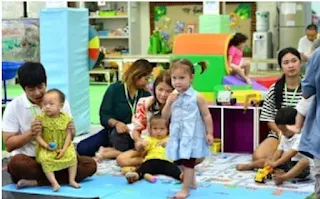The scaffolding as an instructional model of teaching for children has attracted the attention of scholars all over the globe as a facilitating approach for improving their learning. The application of scaffolding in school teaching can produce magical results from the point of view of performance of school children. But as the survey of literature regarding this approach shows, most of the views have focused on the conceptual aspects of it. However, at present scholars are trying to analyze its effect on facilitating the learning by children. Sometimes it is also synonymously used with support to learning. Scaffolding is generally taken as a face- to-face interaction and in this sense this approach can be used as a teacher student interaction approach to enhance the performance of the students. The importance of teacher-student communication in learner’s achievements is strongly emphasized in the socio-cultural educational theory propounded by Lev Vygotsky (1978) and further developed in modern researches as well (Daniels, 2001). According to this theory, process of teaching and learning is “much more than to face-to-face interaction or the simple transmission of prescribed knowledge and skills” (Daniels, 2001). It places stress on dialogue and co-construction of knowledge (Wells, 1999). Since scaffolding approach to behavior provides supportive learning environments, so in such a learning situation students feel free to ask questions, provide feedback and also support to their classmate in learning a new material. Scaffolding approach toward student requires the role of mentor and facilitator of knowledge rather than a dominant expert of teaching. This ultimately leads to the better achievement on the part of the students as it functions as an incentive for active role in their studies. If a teacher realizes that a student is not progressing on some aspect of task or he or she is unable to understand the content of learning, this approach to teaching should be preferred for surprising results. How this target can be achieved? The answer lies in the assumptions of scaffolding approach to learning. In view of the above, the present paper highlights the implications of instructional scaffolding in improving learning and memory of student and also illustrates the ways to use scaffolds in the instructional settings to facilitate the learning process.
Reference

